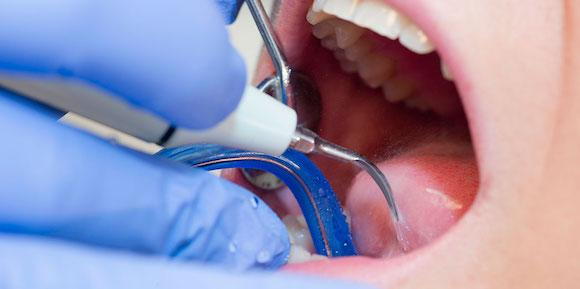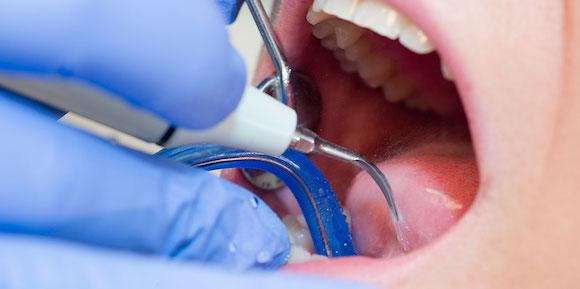
 Develop appropriate policies and procedures to reduce potential infections and improve patient safety.
Develop appropriate policies and procedures to reduce potential infections and improve patient safety.
Infection control plays a critical role in the community dental office and should serve as the foundation for a high-quality, safe, and healthy treatment environment. Even on casual inspection, patients should readily recognize whether infection control techniques have been implemented in all areas of the practice. This includes examination rooms, areas where equipment is stored and medication is dispensed, reception and front-office business stations, as well as locations commonly used by patients, visitors, and guests, such as waiting rooms, staff lounges, and restrooms. Appropriate policies and procedures should be developed and routinely reviewed to help optimize infection control in the dental practice and to enhance the patient experience.
In 2003, the Centers for Disease Control and Prevention (CDC) issued guidelines for patient safety in the dental office in their Guidelines for Infection Control in Dental Health-Care Settings —2003. The guidelines underscored the need for those in dental settings to be cognizant of the importance of infection prevention in dental care and treatment.
In 2016, the CDC published the Summary of Infection Prevention Practices in Dental Settings: Basic Expectations for Safe Care. The information provided reflects existing evidence-based guidelines and brings together recommendations from the CDC 2003 guidelines with tools and checklists to help dental healthcare professionals understand and follow infection prevention guidelines and techniques.
The American Dental Association (ADA) urges all practicing dentists to implement the infection control procedures and guidance as described in the 2003 and 2016 CDC publications. The ADA encourages all dentists to keep up to date relative to the scientific literature on infection control. The ADA further recommends that along with appropriate instrument and materials sterilization, sterilizer monitoring is an essential part of any office infection control program.
The key areas for dental offices to focus on in establishing an infection control program, as outlined in the 2016 CDC publication, include: administrative measures; infection prevention education and training; dental healthcare personnel safety; program evaluation; standard precautions; and dental unit water quality.
Dental Water Quality
Recent incidents in California and Georgia reveal the importance of infection control with respect to dental unit water quality and the avoidance of contaminated dental unit water lines. The incidents underscore the perils to patients if water quality practices are not up to date or given the required attention.
A CNN report in October 2016 described a bacterial outbreak that could result in long-term health effects on 30 children who received pulpotomies at a California dental group. The affected population of pediatric patients experienced Mycobacterium abscessus, an infection with swelling, redness and pain in the area of the infected tooth, and which was capable of spreading to the gum and jawbone. In this condition, removal of part of the jaw is often necessary to stop the infection.
A similar outbreak occurred in a Georgia dental practice, again caused by contaminated water used during pulpotomies, wherein Mycobacterium abscessus was introduced into the chamber of the tooth with water utilized during irrigation and drilling. Investigators believe that low-level stagnant water that was not flushed allowed the bacteria to grow and pose a risk to patient safety.
The ADA supports the CDC’s recommendation to assess the following elements of dental unit water used in dental offices as outlined within the CDC’s Dental Unit Waterlines checklist.
- Dental unit waterline treatment products and/or devices are used to ensure water meets Environmental Protection Agency (EPA) regulatory standards for drinking water (i.e., <500 CFU/mL of heterotrophic water bacteria) for routine dental treatment output water.
- Product manufacturer instructions (for the waterline treatment product and dental unit manufacturer) are followed for monitoring the water quality.
- Sterile saline or sterile water is used as a coolant/irrigant when performing surgical procedures.
A wide variety of microorganisms may contaminate the waterlines in a dental office. Proper waterline infection control, care, and maintenance is recommended via water testing, treatment, handling, and monitoring to properly disinfect waterlines and avoid stagnant water in the community dental office.
By implementing these basic procedures, community dental offices can minimize the possibility of patients developing infections from their office water supply.
By Mariel Kagan, JD, RN, Patient Safety Risk Manager II
Reprinted with permission. ©2017 The Doctors Company. For more patient safety articles and practice tips, visit www.thedoctors.com/patientsafety.
The guidelines suggested here are not rules, do not constitute legal advice, and do not ensure a successful outcome. The ultimate decision regarding the appropriateness of any treatment must be made by each healthcare provider in light of all circumstances prevailing in the individual situation and in accordance with the laws of the jurisdiction in which the care is rendered.
